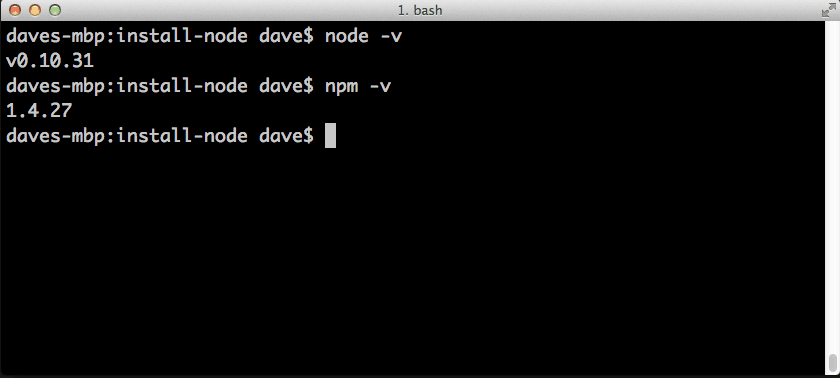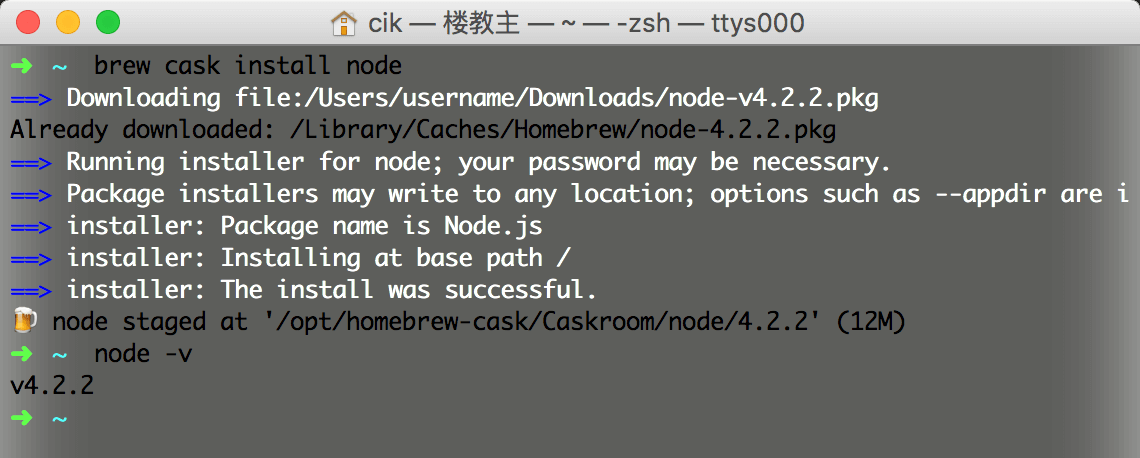

Xcode is the Mac’s IDE ( Integrated Development Environment), that can be used for building apps for iOS, macOS, tvOS, and watchOS. – Homebrew also greatly simplifies the installation of other useful packages like Git, Ruby, or the very useful wget utility.īe sure that you have an updated version of the Homebrew installed in your MacOS: $ brew update – Homebrew makes removing Node very easy (otherwise you have to crawl through your file system and delete a bunch of files manually). It takes a bit longer this way but there’s less room for error. Although the Homebrew method involves installing several different pieces of software, it’s generally just a simple process of point-click-and-wait. For experienced Terminal users or Unix-people, this isn’t a big deal, but for those new, to the command line, that step can be daunting. This involves mucking around with your shell login file. – After installing Node via the installer you have to add the path to the node executable to your system $PATH.

#Brew update node js install
This is a safer approach as it makes sure that any package you install with Homebrew can’t wreak havoc on your computer. – Homebrew doesn’t require access to administrator-only areas of your computer in order to install NodeJS (or any other package). However, installing it via Homebrew perhaps is a preferred method:
#Brew update node js for mac os x
Node.js provides a package installer for Mac OS X which includes node and npm. Why use Homebrew over the default Node installer: If you have already done it, you can update it:

In case you don’t have yet installed Homebrew on your macOS, you can proceed and install it following the instructions here. All server page packages are called up and installed over npm. It comes along automatically if Node is installed. The node consists of core integrated modules, e.g., the HTTP module, in order to host a web server and other modules that can be installed via npm. Node is an Open Source Platform mainly written in C/C++.

If you don’t have NVM installed, or need to update it, run.Node is the core JavaScript runtime environment that runs on the server-side and lets you implement your application back-end in JavaScript. To check what version of NVM you have: nvm -v. F o r updating Node.js, you will need to use Node Version Manager. However, this is both not recommended and completely unsupported so do so at your own risk. $ sudo brew link node Error: Cowardly refusing to `sudo brew link` You can use brew with sudo, but only if the brew executable is owned by root. My brewing dashboard is quite specific to my 2 vessel brewery. I’ll improve it and add features from time to time, and it’s all there for you to borrow ideas from/copy/modify and otherwise jump start your own process of using Node-RED. The most recent information and version of my brewing dashboard can always be found on github. Installing NodeJS / NPM via Homebrew is arguably easier than using any other method, and it also makes it simple to keep node.js and npm updated. Assuming you already have Homebrew on the Mac, then you can run the following command into the Terminal application to install both Node.js and npm: brew install node.


 0 kommentar(er)
0 kommentar(er)
